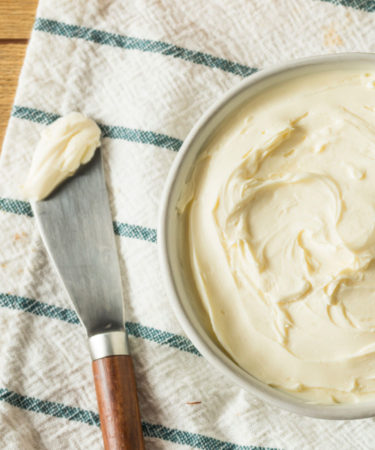You won’t find them on grazing boards, but tangy, creamy soft cheeses should not be overlooked when stocking your refrigerator. Soft cheeses are versatile. They can be used as a breakfast spread, stirred into soups or sauces to add texture, or incorporated into desserts. Variations among the different types of soft cheese are subtle. In most cases, these variations are due to the type of milk and processes used.
Ready to learn how cream cheese differs from crème fraîche? Here are all the different types of soft cheese, explained.
Cottage Cheese
Best known for their inclusion in a popular nursery rhyme, curds and whey are produced by curdling, or separating, milk — a vital stage in all cheese production.
To make cottage cheese, the milk is curdled using a bacterial culture or an acid such as vinegar. Once separated, the whey is drained from the solid curds, which are then cut into pieces to release additional moisture. The curds are then cooked further before receiving a light salt seasoning. Cottage cheese is culturally significant in America as it was the first type of cheese made in this country (circa mid-1800s). The cheese has a creamy yet lumpy texture and a mild, slightly acidic flavor.
Farmer’s Cheese
Farmer’s cheese is a variant of cottage cheese, made by pressing the whey from the curds (compared to just draining). It tastes more acidic than cottage cheese and has a firmer texture due to its lower moisture content. Farmer’s cheese can be made using cow, sheep, or goat milk, and is sometimes rolled in different herbs and seasonings.
Cream Cheese
The name of this cheese not only describes its texture, it also references one of its two main ingredients: cream (the other is unskimmed cow’s milk). Lactic acid is used for coagulation, and also influences the cheese’s aroma. Mild, slightly sweet, with a faint acidic note, cream cheese is an ideal bagel spread and can be used in cakes and frostings.
Ricotta
Curds aren’t the only milk product used to make cheese. Ricotta utilizes the whey from sheep, cow, goat, or buffalo milk. Mixed with salt and acid, the whey is warmed to a specific temperature, at which point coagulation begins. The mixture is then removed from the heat, cooled, and drained through a fine sieve or cheesecloth, leaving behind mildly sweet, creamy ricotta. Native to Italy, ricotta is a popular pasta stuffing and also used to make dips, baked into breads and cakes, and appears as a topping for pizza and salads.
Mascarpone
Another creamy Italian soft cheese, Mascarpone is made by curdling cream with acid, before the whey is removed without pressing. This soft cheese has a very high fat content (because it’s made with cream rather than milk), which makes it the ideal ingredient for Italian desserts such as tiramisu.
Crème Fraîche
Native to France, crème fraîche is made using a method similar to Mascarpone. But while the latter is mild with a perceived sweetness, crème fraîche has a sharper acidic tang, leading to its use in a number of savory dishes. Because of its high fat content, it doesn’t curdle when cooked, so cooks sometimes stir it into hot savory sauces and soups to add body.
